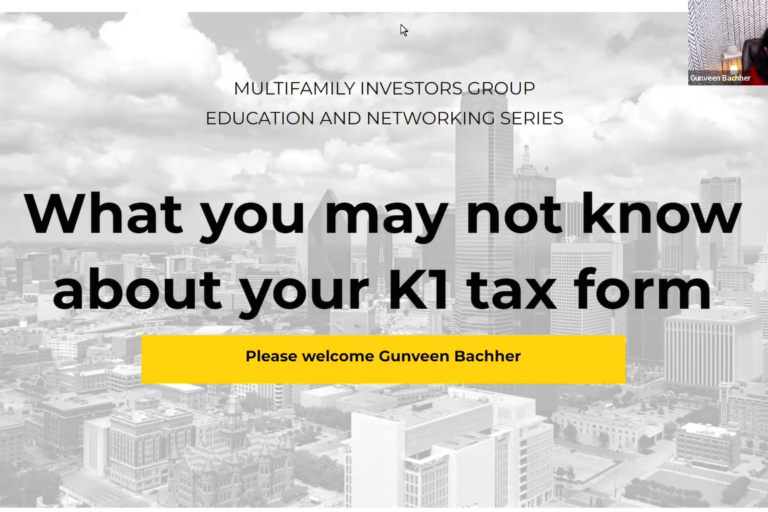Real estate, which includes land, homes, offices, and retail structures, is a popular investment option for those who like to put their money into tangible assets. Many investors pick real estate as a source of income or because it is relatively simple to borrow money to purchase homes. Passive real estate investing is the act of owning rental properties that generate income without you having to be involved in the day-to-day management and operation of the property. If you’re a passive real estate investor, you don’t want to spend your time running around trying to fix a leaky faucet. You want a team of professionals behind you who can take care of all that stuff for you—and that team generally comes from a professional property manager. Look for a company with a proven track record and good references from other investors. The first step in analyzing a passive investment is to determine whether it’s an equity or debt offering. From there, you can evaluate the deal using cap rates (for debt) and using cash-on-cash returns (for equity). If you’re considering both types of investment opportunities, keep in mind that each has its pros and cons. Debt deals may provide steady income streams with a guaranteed return of capital at the end of your term; equity deals, on the other hand, can provide larger returns over the long term through appreciation and distributions from operations. What Is Passive Real Estate Investing? Passive real estate investing, also known as non-active investing, refers to a type of real estate investment that does not require direct involvement from the investor. In this form of real estate investment, the investor can enjoy cash flow from rent received without becoming involved in the day-to-day management and responsibilities of owning rental properties. Passive real estate investing is sometimes called “hands-off” investing because it requires little or no hands-on work by the investor. Passive real estate investments can take many forms, including real estate investment trusts (REITs), syndications, and crowdfunding platforms. To analyze a passive real estate investment, you should consider the following factors: Location: Is the property located in a desirable area with strong rental demand? Property condition: Is the property well-maintained, or will it require significant repairs? Potential return on investment (ROI): What is the potential for rental income, and how does it compare to the cost of the investment? Management: Who will be responsible for maintaining the property and finding tenants? Will you be required to be actively involved in the management of the property, or will you be a passive investor? Risks: What are the potential downsides, such as vacancy risk or the risk of natural disasters? Tax implications: How will the investment affect your tax liability? Analyze Real Estate Investment deals Let’s walk through it, so you can see what I mean. Let’s walk through it, so you can see what I mean. To begin, the process, the first step is education. This is the time when you, as a passive investor, get educated on the deal. You learn that the deal sponsor has a deal and that they’re seeking passive investors for it. Then, you learn what the deal itself consists of. Often, this information on the deal will come to you from being on a deal sponsor’s email list and receiving a notice from them of the upcoming deal. In learning about the deal itself, you’ll probably join the deal sponsor for some sort of presentation. As a deal sponsor – and a friend to numerous other deal sponsors – I can tell you that presentations are the norm when sponsors wish to communicate their deals to interested passive investors. Your commitment – if you chose to make it – would be to “softly” pledge to put money in the deal sponsor’s deal. In this case, “softly” means that you’re not making a rock-solid, binding commitment to invest $__.___ in the deal sponsor’s deal. That kind of commitment could be one you make later. Yet for now, you’re just making a “soft commitment” to keep yourself in the running, to potentially participate in the deal. Let’s begin the discussion with a look at metrics. Metrics are what you’ll use to measure your potential returns from a deal. They’ll allow you to see whether the deal will produce healthy or unhealthy returns. Metrics will also help you to make the right decision when faced with investment opportunities that all look good. To start on metrics, here’s an example. For this example, suppose you were presented with the following three opportunities: Deal 1: A deal where you’d put in $100,000; receive $8,000 cash flow each year for 5 years; and then in the 5th year, earn returns when the property was sold for $200,000. Deal 2: A deal where you’d invest $100,000; receive $3,000 cash flow per year over 5 years, and then get another payday from the sale of the property in year 5 for $250,000. Deal 3: A deal that has you invest $100,000; receive NO returns for the first year; watch as the property is refinanced for $50,000 cash out in year 2; receive $2,000 cash flow per annum in Years 3, 4, and 5; and at last receive returns when the property is sold for $200,000 in year 5. Cash Velocity Deal 1 Deal 2 Deal 3 Total Investment $100,000 $100,000 $100,000 Operational Cash Flow Y1: $8,000 Y2:$8,000 Y3:$8,000 Y4:$8,000 Y5:$8,000 Y1: $3,000 Y2:$3,000 Y3:$3,000 Y4:$3,000 Y5:$3,000 Y1: $0 Y2:$50,000 Y3:$2,000 Y4:$2000 Y5:$2000 Sales Price $200,000 $250,000 $200,000 Of those three opportunities, which one is best? It depends on what metrics you’re looking at. (For the sake of simplicity, look only at those metrics for the time being and ignore any buying or selling costs (i.e. closing costs, broker fees, etc.)). Now, getting into those metrics, we can start with the cash-on-cash return. It’s the simplest metric to understand when assessing your returns from a deal. cash on cash return = Annual Cash Flow/Total Investment In those three … Read more






